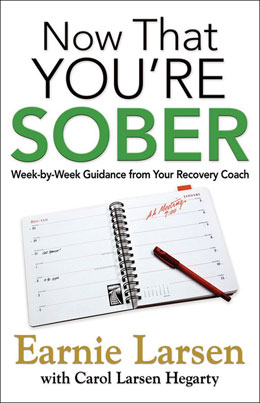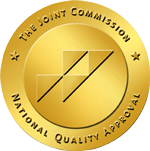
"Look through the eyes of your spirit at who you were then, who you are now, and what most helped you at the very beginning. Nothing less than love is required."

Other titles you may like.

Passages through Recovery:
An Action Plan for Preventing Relaspe

Destination Joy: Moving Beyond Fear,
Loss and Trauma in Recovery

Three Simple Rules:
Uncomplicating Life In Recovery
Visit Recovery Road to view and
listen to all the episodes.
Episode 252 -- December 22, 2022
Nothing Less than Love is Required
We may have heard the phrase, "Pay it forward." It means doing something kind or useful for someone because someone else has done something kind or useful for us. If we're in Twelve Step recovery, we may know the AA version of this phrase, particularly when it comes to the Twelfth Step: "Carry the Message." But what is the message we're supposed to carry? And how far along in our recovery journey does a person have to be to serve as such a messenger?
In their book Now that You're Sober: Week-by-Week Guidance from Your Recovery Coach, Earnie Larsen and Carol Larsen Hegarty help answer these types of questions and more. This beloved guide offers a year's worth of recovery wisdom and inspiration to help those who are newly sober focus on practical applications of Twelve Step principles.
In the following excerpt, we hear about James, an AA member who has had a tough go at life but now helps others hear and embrace the message and the miracle of recovery. James' story helps us dive deeper into the true meaning of Twelfth Step service and learn the difference between Twelve Step "dogma" and the spirit that brings new life and new chances to real people every single day.
This excerpt has been edited for brevity.
Carry the Message
Part of the Twelfth Step is all about service work. It's about getting out of self and helping others. It's about carrying the message. The sooner we begin to escape the prison of self, the sooner we begin to recover from the disease of addiction. But what is the message we're supposed to carry? And how far along in recovery does a person have to be to carry it? To answer these questions, start by remembering who you were and how you were when you first came—or came back—to the program. How were you feeling? What was going on inside of you? Which of your needs was bleeding all over the floor? What had you lost? What message did you most need to encounter to "get in" and "keep on climbing?" True service work means getting out of self. And that means, among other things, getting out of yourself as you are now. Think back to who you were to best understand what message it is you have to give. Look through the eyes of your spirit at who you were then, who you are now, and what most helped you at the very beginning. Nothing less than love is required. Some of you may wonder, "Is all that love stuff strong enough, or is it all just fluff? Fluff that somehow weakens and distracts from real recovery?"
Meet James. All his life he's been called "Big James." He's big in a lot of ways. Being on his own from age nine and being a "street baby," as he says, James grew up tough.
He'd lived in twelve foster homes before he finally went out on his own at age sixteen. He was already deep into criminal behavior. James will be the first one to tell you, though, that his life didn't seem criminal to him. It was all he knew. In the world he came from, there weren't any other options.
James did his time in juvenile hall and prisons. He rode with the worst of the outlaw motorcycle gangs. When not in prison, James was a hit man and leg-breaker for a major loan shark and drug king. For the longest time, he said, kneecapping people, breaking other bones, or worse never bothered him. It was just what he did. It was just life.
Miracles happen. In the mysterious, spiritual way it happens, James got sick and tired of being sick and tired. He floated into recovery (as much as a big man like James can "float"), and there his heart was changed. He was picked up from the left-hand side of the goalpost and dropped on the right side of recovery, where he found a fellowship he had never imagined existed. As he moved along into recovery, he began having spiritual awakenings. Slowly, his inner eyes were opened, and he saw a sweet vision of what life could be. Never before had he dared such a dream for himself.
James is functionally illiterate, but he has a Ph.D. in street wisdom. His X-ray vision immediately cuts through any scamming, posing, or game playing (at least what he sees as game playing).
One day, James was invited by his sponsor to a fancy recovery celebration hosted by a large treatment center. Besides just celebrating recovery, the highlight of the event was the presentation of an award for academic contribution to the field of recovery. That year the honor went to a statistician who had researched and created a software program for tracking the effectiveness of various treatment programs for different forms of addiction. No doubt the fellow had made a worthy and worthwhile contribution.
For some reason, James's interest was piqued. He wanted to meet this man. So after the presentation was over, James ambled over to this individual, introduced himself, and politely asked a few questions.
Two of James's questions were "Have you ever done service work? Have you ever done a Twelve Step call?" James said the man didn't understand the question. He said he didn't know what "service work" was. So James thanked him for his time and walked away.
On their way home, James's sponsor asked, "So, did you find out what you wanted to know from him?" James said, "Yeah, but he don't know what counts. He don't know where the dogs are fighting."
Of course, there is a side to treating disease other than what James knows or cares about. Academic research has its place. But recovery is not all or even mostly about professionals conducting research or outcome studies. That's not who has been called to "carry the message" of hope and help to the hopeless and helpless. Those who are called to serve in this precious, mysterious, and miraculous work of recovery are people who can see with their hearts. It's those people, whether in the first or fiftieth year, who "know where the dogs are fighting." It's those people who know the difference between the dogma of the program and the spirit of the program—and serve the spirit.
There's a story that has floated around the rooms forever about a long-established, rather rigid group of old-timers. The story goes that at one crowded meeting, mostly of other rather uptight old-timers, a shoeless young man with a scruffy beard, torn jeans, and metal rings all around his face showed up. Supposedly, the noise volume of the room dropped as he walked in. Many of those in attendance were looking at the young man out of the corners of their eyes and wondering, "What is he doing here?"
Since no chairs were available, the young man moved to the side and effortlessly slid down the wall until he was sitting on the floor. The oldest of the old-timers, a dignified man leaning on a cane, walked over to the young man, looked down at him, and then—with considerable effort—slid down the wall himself until he was sitting next to the young man. He held out his hand to the young man, said his name, and told him, "I'm glad you are here. You are among friends."
The old-timer knew why the newcomer was there—for the same reason everyone else was there: To find sobriety and the means to stay sober within the Fellowship. That first of all. That above all. That all in all. Everything else was just clutter.
What's the message? Who qualifies to carry that message? Every organization has two parts: the dogma and the spirit, the law and the spirit of the law, the written word and the lived word. So it is with the Twelve Step Fellowship. So it is with recovery. One is in the head and the other is in the heart. Both are necessary. (That's why there are Twelve Traditions supporting the Twelve Steps.) Both are necessary, but both are certainly not the same.
Recovery is about living the Steps, and that is a matter of the heart. It's about the spirit and not just the knowing. It's about knowledge that is pushed to wisdom by the living of that knowledge. It's about opening a path from head to heart so the heart, the self, our humanity is able to crawl out from under the insanity of addiction and start climbing upward on the wings of lifesaving connection.
And what does all this have to do with new recovery? Everything. Where we start is where we finish. We, your sponsors and coaches, urge you to begin your recovery with the clear understanding that this journey is of the spirit and of the heart. The wisdom we seek can only be found by opening our hearts. It's about caring, even though caring is risky—yes, we can be hurt. But without caring, without the spirit of the old-timer in the story who knew what that young man needed, who knew how to "carry the message of the program to him," there is only a shadow of what's real. Without the spirit, there's only dancing around what is real, and "dancing around" doesn't take a person home. Recovery is about going home.
About the Author:
Earnie Larsen was a nationally known author and lecturer. A pioneer in the field of recovery from addictive behaviors and the originator of the process known as Stage II recovery, Earnie authored numerous curricula, DVDs, audio CDs, and books with Hazelden and other publishers. With degrees from Loyola University and the University of Minnesota, Earnie had been a counselor for more than forty years. He passed away in 2011.
Starting out as a newspaper reporter, Carol Larsen Hegarty went on to educational publishing and worked as a program developer for several companies. She and her brother Earnie have collaborated on a number of books, including Days of Joy, Believing in Myself, and Moving from Anger to Forgiveness. She has been a grateful member of Al-Anon for more than 40 years.
© 2010 by Earnie Larsen and Carol Larsen Hegarty
All rights reserved

